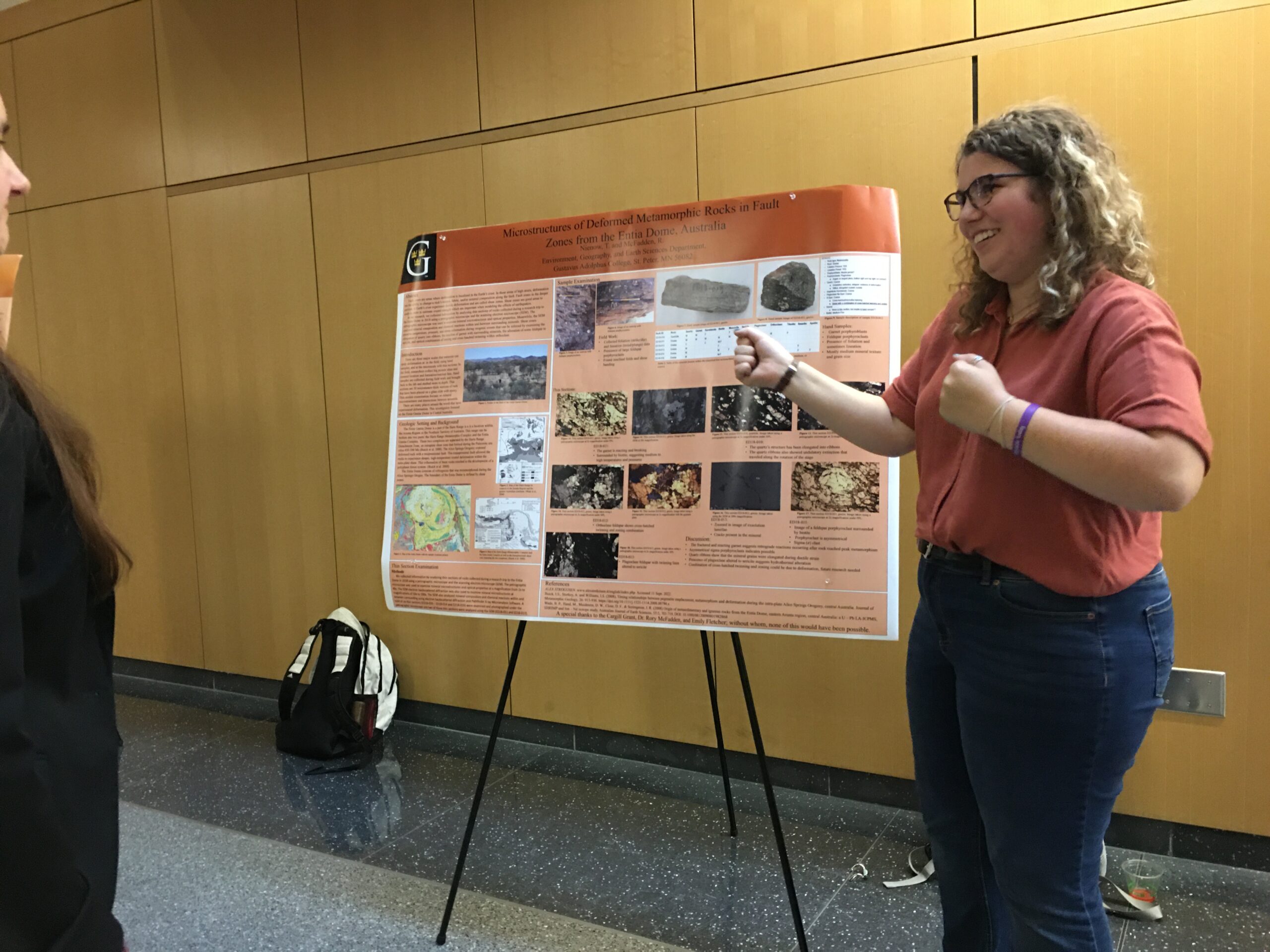This year’s Fall Research Symposium was held on September 16, 2022, and students from across campus were given the opportunity to share their work. Research, scholarship, and creativity is a valued part of the Gustavus experience, and the symposium is one way in which it can be represented and shared with other members of the campus community. About 70 students accepted this opportunity and presented the research they had worked on including Kendra Smaby (‘24), Jack Stonecipher (‘23), and Torii Nienow (’24).

Smaby, who worked with Pamela Conners and Amanda Nienow, focused on “measuring gender differentials in deliberative participation” for her research topic. Her research found that in deliberations on water contamination between groups of students of the same entry level chemistry, “the per capita word count of male participants was higher than the per capita word count of female participants.” She concluded that although the causes are unclear, a gender differential exists. She enjoyed her experience presenting at the symposium and described that she felt she had created something because of the opportunity.
Stonecipher worked with Dr. Joe Shaw at Montana State University and was a part of a drone river imaging project. They studied algal blooms in rivers as an indication of the river’s health by using a hyperspectral imager on a drone. This river imaging can be obstructed by sun glints that obscure what is underneath the water. His research focused on “devising a method to reduce the amount of sun glint in drone imagery,” to decrease this issue. He was drawn to this research topic because he “was excited about being able to do some work outside,” and “loved the idea of this technology being used to protect ecosystems.” He enjoyed his experi
ence at the symposium as well and claimed it was a good way to practice presenting research and public speaking in general.

Nienow, with faculty member Rory McFadden, studied fault zones in the Black Hills over the summer and looked at samples from the Entia Dome in Australia. She looked at specific areas of fault zones called shear zones that preserve certain information during mountain building events. She was drawn to this research opportunity because she had taken a class with the professor leading the project that she really enjoyed. She was also excited by the field work component of the opportunity. She “had so much fun” presenting at the symposium and enjoyed being able to see everyone else’s work as well.

Research has both rewarding and challenging aspects. Smaby described the main challenge she faced was being in different time zones from the other members of her research group. She described the most rewarding aspect was going through the transcripts and having findings from her work. Stonecipher explained that the main challenge he faced was having to work with concepts he wasn’t familiar with. He felt the most rewarding parts were getting all the aspects to work together and the satisfaction it brought and “finally seeing the images that prove how effective polarized photography can be.” Nienow explained that the most challenging aspect of her research was the short amount of time they had. She said “there was so much more” they could have done if they had time. The most rewarding part for her was the entire experience. Getting to say she “worked on an academic research project” is a big accomplishment for an undergrad.
Smaby, Stonecipher, and Nienow all recommend other students to participate in research at Gustavus. Smaby found it was a great way to connect with professors and other students. Stonecipher encourages other students to “go for it,” and accept research opportunities. He explained the benefits of participating in research to include trying different fields and making important connections. Nienow encourages students to accept research opportunities they are given and describes how it is a great way to “add another level” to education and apply classroom learning to real-world situations.
